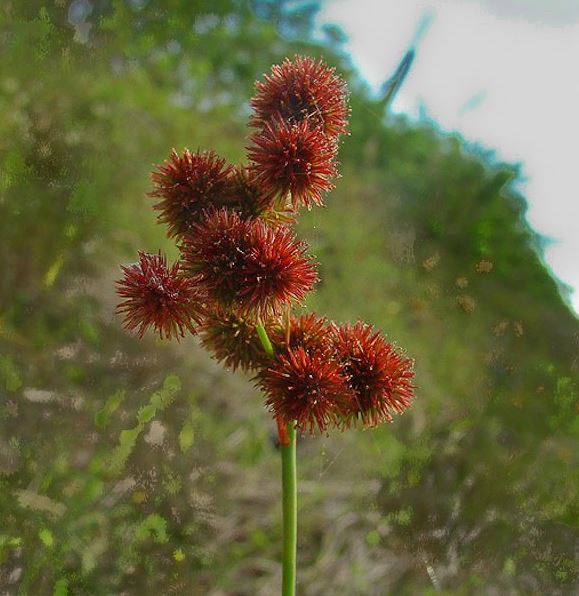Difference between revisions of "Juncus megacephalus"
Emmazeitler (talk | contribs) |
|||
| Line 43: | Line 43: | ||
<!--==Diseases and parasites==--> | <!--==Diseases and parasites==--> | ||
| − | ==Conservation and | + | ==Conservation, cultivation, and restoration== |
''J. megacephalus'' is listed as endangered/extirpated by the Maryland Department of Natural Resources Natural Heritage Program.<ref name= "USDA Plant Database"/> | ''J. megacephalus'' is listed as endangered/extirpated by the Maryland Department of Natural Resources Natural Heritage Program.<ref name= "USDA Plant Database"/> | ||
| − | == | + | ==Cultural use== |
==Photo Gallery== | ==Photo Gallery== | ||
<gallery widths=180px> | <gallery widths=180px> | ||
</gallery> | </gallery> | ||
==References and notes== | ==References and notes== | ||
Revision as of 16:51, 8 June 2021
Common name: Bighead rush[1], large-headed rush[2]
| Juncus megacephalus | |
|---|---|

| |
| Photo by John B | |
| Scientific classification | |
| Kingdom: | Plantae |
| Division: | Magnoliophyta - Flowering plants |
| Class: | Liliopsida - Moncots |
| Order: | Juncales |
| Family: | Juncaceae |
| Genus: | Juncus |
| Species: | J. megacephalus |
| Binomial name | |
| Juncus megacephalus M.A. Curtis | |

| |
| Natural range of Juncus megacephalus from USDA NRCS Plants Database. | |
Contents
Taxonomic Notes
Synonyms: none.[3]
Varieties: none.[3]
Description
J. megacephalus is a perennial graminoid of the Juncaceae family native to North America.[1]
Distribution
J. megacephalus is found along the southeastern coast of the United States from Texas to Maryland.[1]
Ecology
Habitat
J. megacephalus is found in brackish and freshwater marshes, bogs, wet prairies, interdune swales, ditches, and other wet open places.[2] Specimens have been collected from recently burned witchgrass slough and tidal marsh of a river.[4]
Phenology
This plant blooms June through August.[3]
Fire ecology
J. megacephalus is not fire resistant, but has high fire tolerance.[1]
Conservation, cultivation, and restoration
J. megacephalus is listed as endangered/extirpated by the Maryland Department of Natural Resources Natural Heritage Program.[1]
Cultural use
Photo Gallery
References and notes
- ↑ 1.0 1.1 1.2 1.3 1.4 USDA Plant Database https://plants.usda.gov/core/profile?symbol=JUME
- ↑ 2.0 2.1 Weakley, A. S. (2015). Flora of the Southern and Mid-Atlantic States. Chapel Hill, NC, University of North Carolina Herbarium.
- ↑ 3.0 3.1 3.2 Weakley, A.S. 2015. Flora of the southern and mid-atlantic states. Working Draft of 21 May 2015. University of North Carolina at Chapel Hill, Chapel Hill, North Carolina.
- ↑ URL: http://herbarium.bio.fsu.edu. Last accessed: June 2018. Collectors: R.A. Norris, R.K. Godfrey, Cecil Slaughter, Dianne Hall, Kim Ponzio, Loran C. Anderson. States and counties: Florida (Wakulla, Jefferson, Brevard)